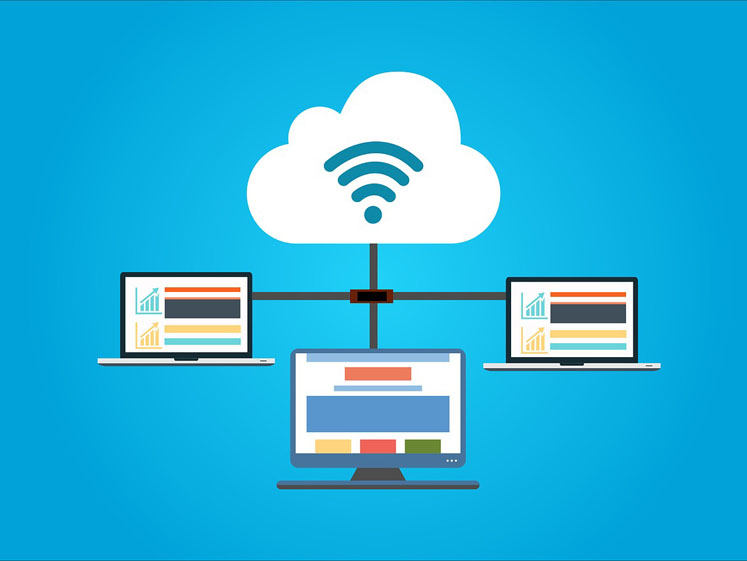Despite recent advances in technology, many laboratories still rely on paper-based notebooks to record protocols and experiments, keep track of results and record data analysis. The volume of data being generated by some laboratories makes this process very labour intensive and also limits cross-site collaboration and communication.
Digital solutions, such as Laboratory Information Management Systems (LIMS), are able to consolidate data from instruments and manual laboratory processes, which must then be integrated with the rest of the organisation. Developed in the 1980s, LIMS have been constantly updated and improved to meet the demand for faster turnaround times and greater sample volume testing.
However, many traditional LIMS systems have not historically covered the entire laboratory process and are now often supplemented with other solutions, including electronic laboratory notebooks (ELNs), scientific data management systems (SDMS) and laboratory execution systems (LES).
Rapid changes and developments in technology have paved the way for organisations to increase profits, reduce costs and drive operational efficiencies. Now, more than ever, hidden value is found in laboratories and executives are taking a more holistic view to improve processes. Laboratory managers are expected to drive the implementation of more integrated laboratory solutions that unlock disparate, disconnected data silos and harmonise IT infrastructure.
Barriers to lab productivity
One of the greatest challenges facing research and development (R&D) productivity is the lack of a central data access point. As well as facilitating more streamlined data sharing, a central point of access significantly improves productivity by clarifying where team members should store and find data.
When laboratory staff have to rely on several different data distribution methods, productivity is significantly slowed. Hours are wasted because of poor data collection and reporting systems. Digital solutions can generate a consistent, repeatable process to disseminate data, as well as improving data searches by hosting all data points in one location.
More sophisticated technological solutions can also reduce user frustration and, ultimately, increase job satisfaction, which also leads to productivity improvements.
Modern laboratories must remain agile and responsive to upcoming industry trends — a requirement that is hindered by outdated informatics tools and inefficient workflows. Written observations in paper-based notebooks are often transcribed incorrectly, and tests and experiments are frequently repeated owing to previous data being lost or inaccessible.

Steve Yemm, CEO, BioData
This minimises the flexibility laboratories have to keep pace with industry developments and is further confounded by budget cuts that see laboratories running with the same level of demand … but with fewer human resources. Technological advances go a long way to ease this burden.
Improving operational efficiencies
ELNs are gaining popularity as solutions to productivity challenges. The time saved on administrative tasks by implementing an ELN system enables researchers to reach milestones faster while saving money. ELNs also allow laboratories to be more compliant; but, many are hosted locally, which poses a problem for those that operate across multiple sites and, often, multiple countries.
When ELNs first arrived on the market, many were promoted as “one-size-fits-all” solutions, generating scepticism around their true usability as it became apparent that academic research labs have vastly different needs to pharmaceutical quality control labs, for example.
The multiple applications of an organisation across numerous locations generates a multitude of data that often sits in separate silos. Data formats and applications are frequently inconsistent, making it hard for laboratory members to aggregate all their work in one place, and for managers to oversee it.
ELNs and LIMS go some way to alleviate these challenges, but the issue is further complicated when laboratory managers and directors are required to manage multiple teams, often in different places.
With every individual in an organisation benefiting from advanced laboratory technology, the entire workflow can be seamless. Laboratory technicians can document data, team leaders review it and project managers can oversee activity and relate it to timelines and budgets.
Links can be placed digitally between projects and experiments, and metadata attached to make searches faster and simpler. All this makes communicating feedback smoother and keeps discussions within the context of individual experiments.
Navigating a cloud-based environment
Control and flexibility are two critical elements for the successful implementation of an ELN system. Some now incorporate a cloud-based management system to serve a range of individuals working in different locations. These systems structure data to provide a better overview and make reporting simpler and quicker.
Such systems integrate data across the entire laboratory workflow. For example, one team member can order reagents for a particular experiment and link them to a protocol. Users can see where an item was used across a list of experiments, making it easier to find data, troubleshoot any issues and establish the suitability of entities for different experimental tasks.
Quantity of data is another hurdle that cloud-based laboratory management solutions are designed to overcome. Many analytical techniques, such as flow cytometry, generate a vast number of large raw data files, which often need to be retained and integrated into the documented experiment to ensure its availability for spot checks.

Working in the cloud also means that the user’s space will be freed up as the provider is the one offering the space to store data virtually. Enabling better traceability of data and procedures taken during experiments means the cause of failed experiments can be tracked, ultimately reducing the number of these fails and enhancing laboratory output.
Time and cost savings are two of the key reasons why organisations transition from paper-based laboratory processes to cloud-based digital systems. For example, a central laboratory can use the online interface to register samples, enter them and specify tests. Automatic sample review eliminates the need to manually check that all information has been entered correctly.
One laboratory estimated that they gained one day per week in lab time per analyst by reducing the time spent writing up experiments in paper notebooks. Much of these time savings come from the ability to attach data via drag and drop, rather than having to scan, print and compile all information manually. Information can be added in real-time, reducing the chance of error as well as saving time.
Regulatory compliance
Many organisations are reluctant to establish a cloud-based laboratory management system for fear of breaching regulatory compliance. Code of Federal Regulations Title 21 (21 CFR) Part 11 compliance stipulates experiment audit trails and digital signatures as a baseline requirement for cloud-based ELN systems.1
For clinical data storage and management, ELN systems that are HIPAA-compliant may be required. Cloud-based ELNs make time stamping for regulatory and intellectual property tracking more straightforward, owing to the simplicity of tracking ownership of experiments and determining which team member inputted certain data.
The future of lab innovation
Laboratories need a user-friendly informatics system in which individuals can store data in a structured manner while maintaining regulatory compliance. Cloud-based ELNs and other laboratory management systems facilitate the homogeneity of data and high quality standards.
Capturing data and procedures in a high-quality manner creates a better, more robust platform for future research and ensures both the reuse of data and the reproducibility of experiments reported in papers in world-leading research.
As organisations become increasingly globalised, the need for powerful, agile and flexible laboratory management solutions is going to intensify. Cloud-based solutions provide proactive insights into data, allow better management of inventories and help laboratories to manage their collaborations more effectively.
By simplifying laboratory workflows and processes, teams can focus their time and efforts towards tomorrow’s innovations, and laboratory managers can achieve better return on investment.
Reference
- www.accessdata.fda.gov/scripts/cdrh/cfdocs/cfcfr/CFRSearch.cfm?CFRPart=11.




